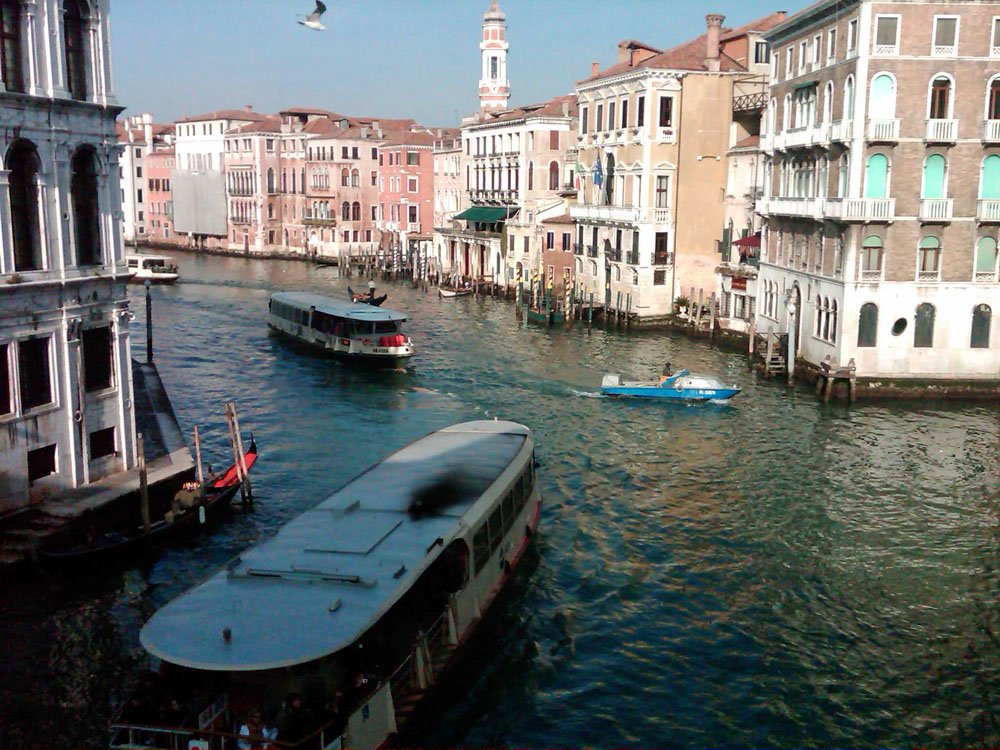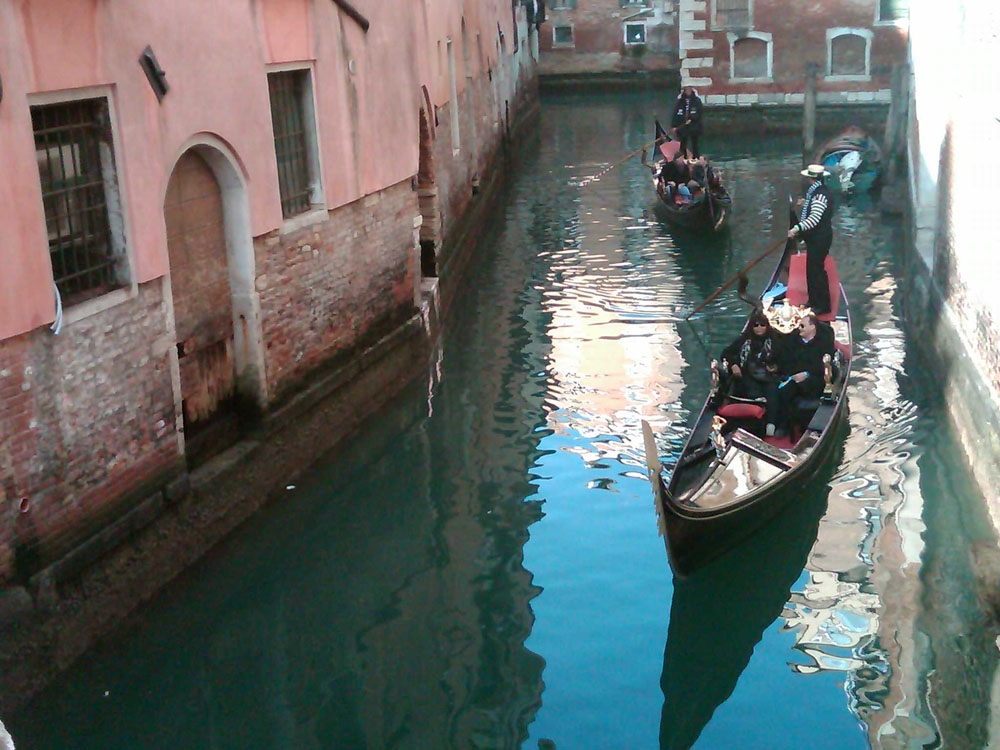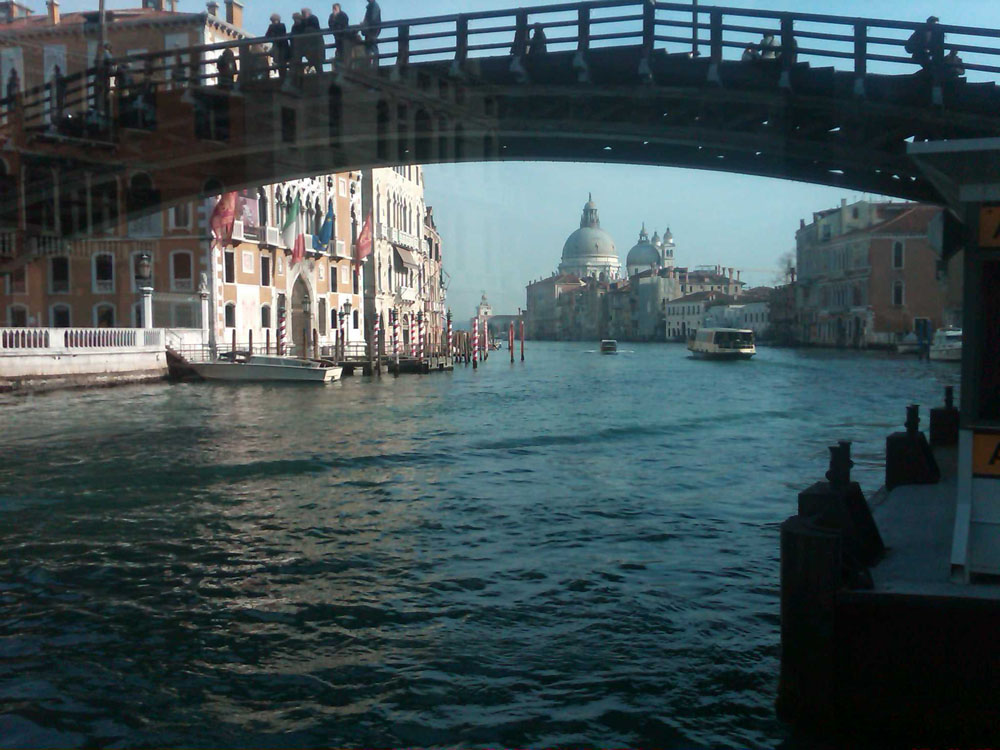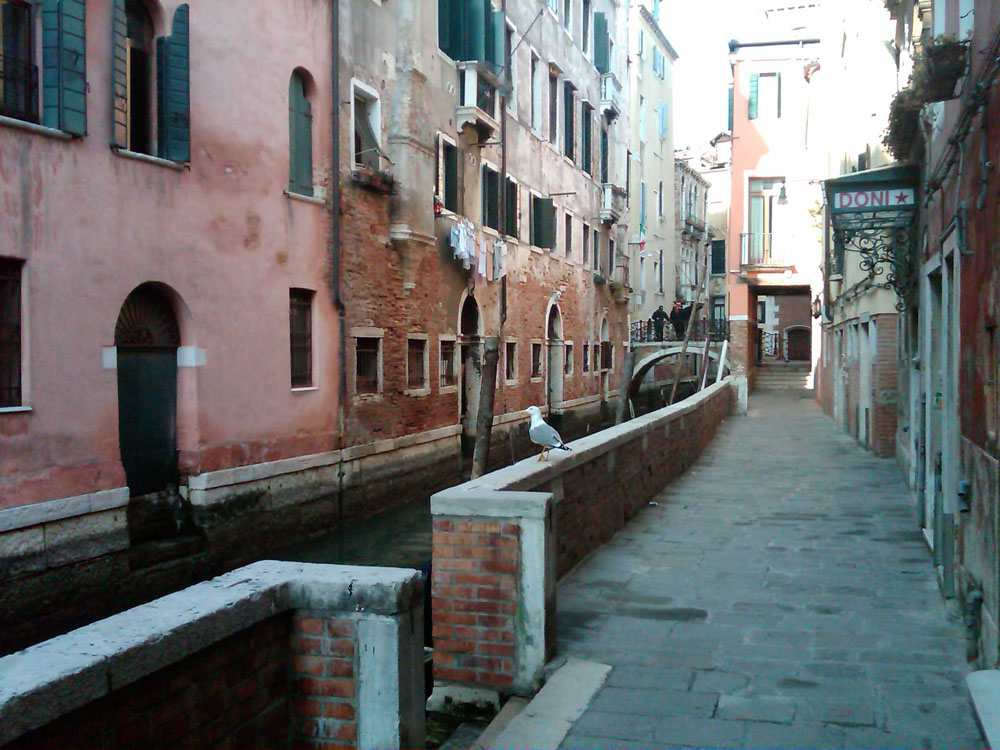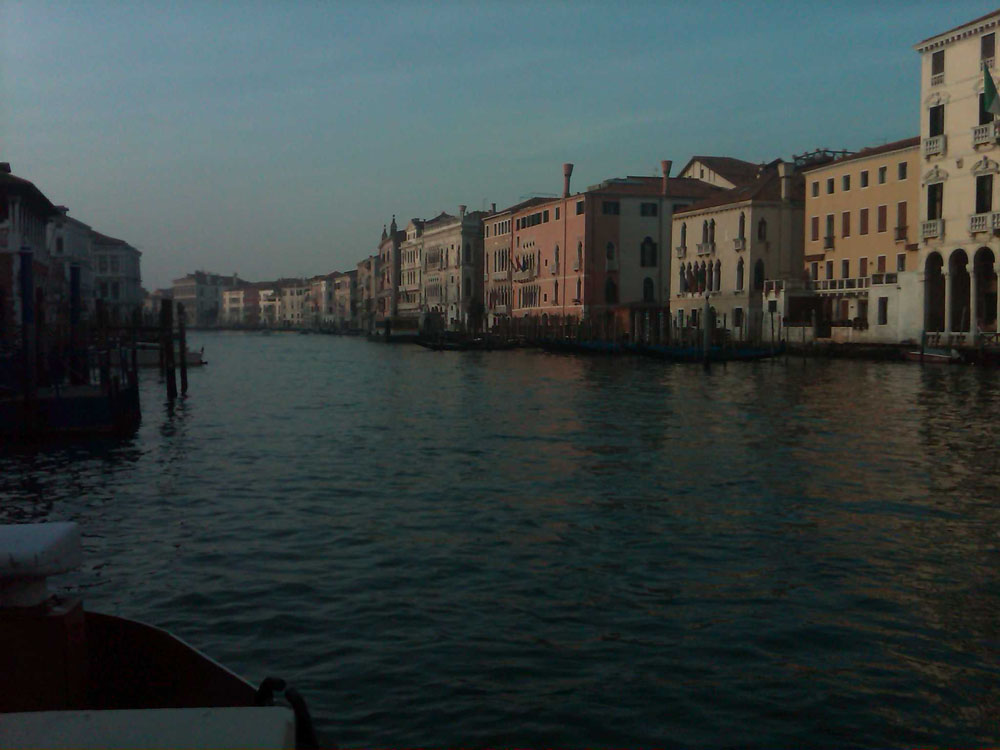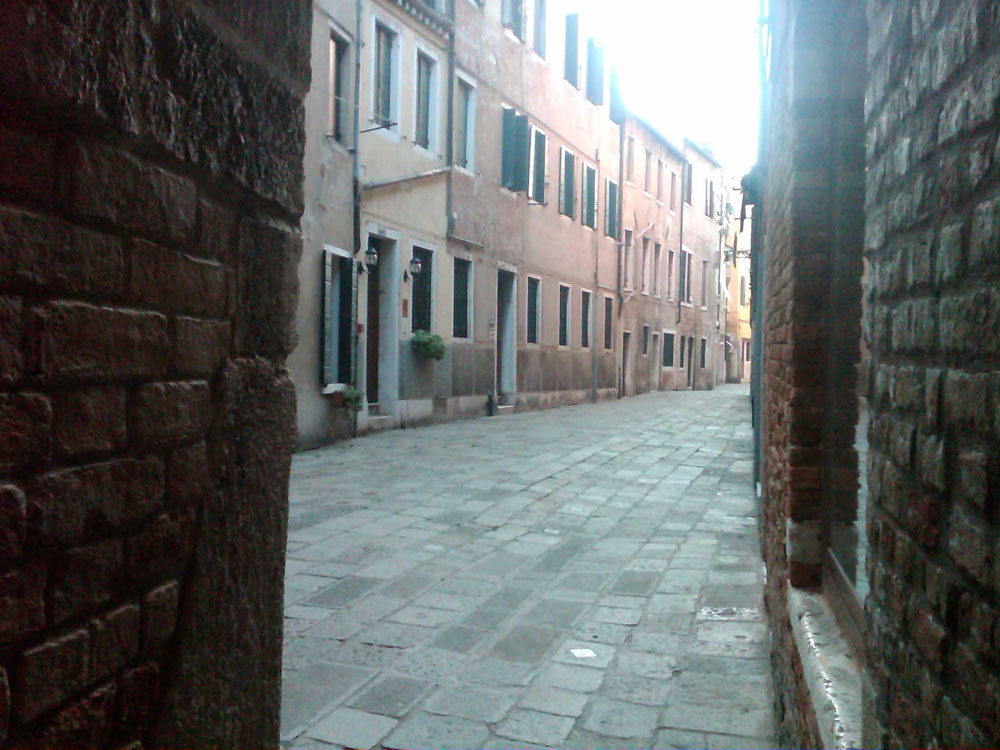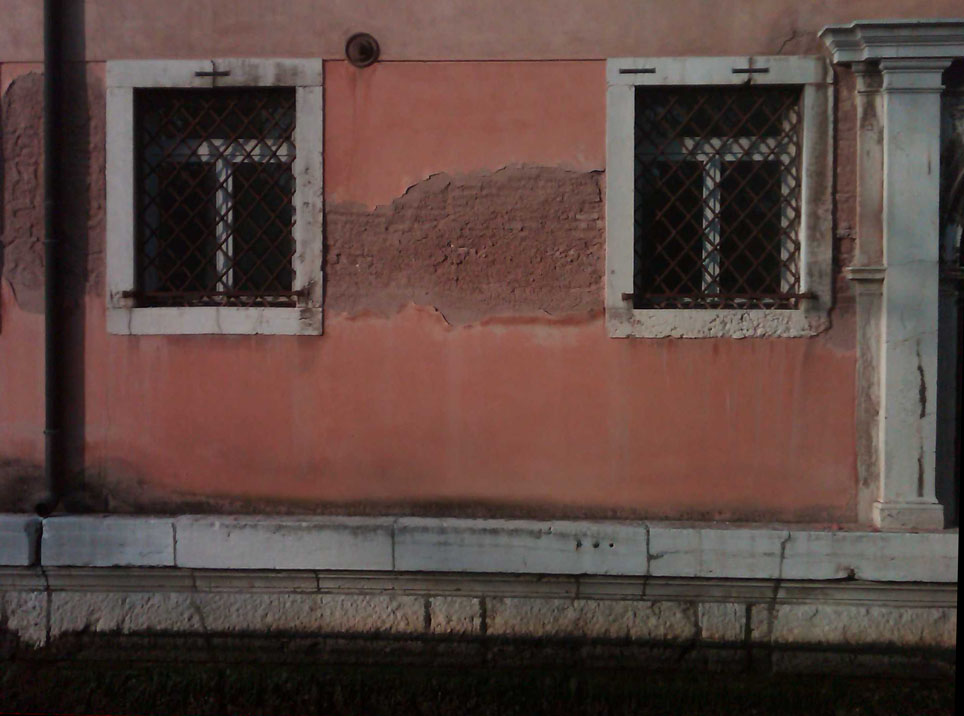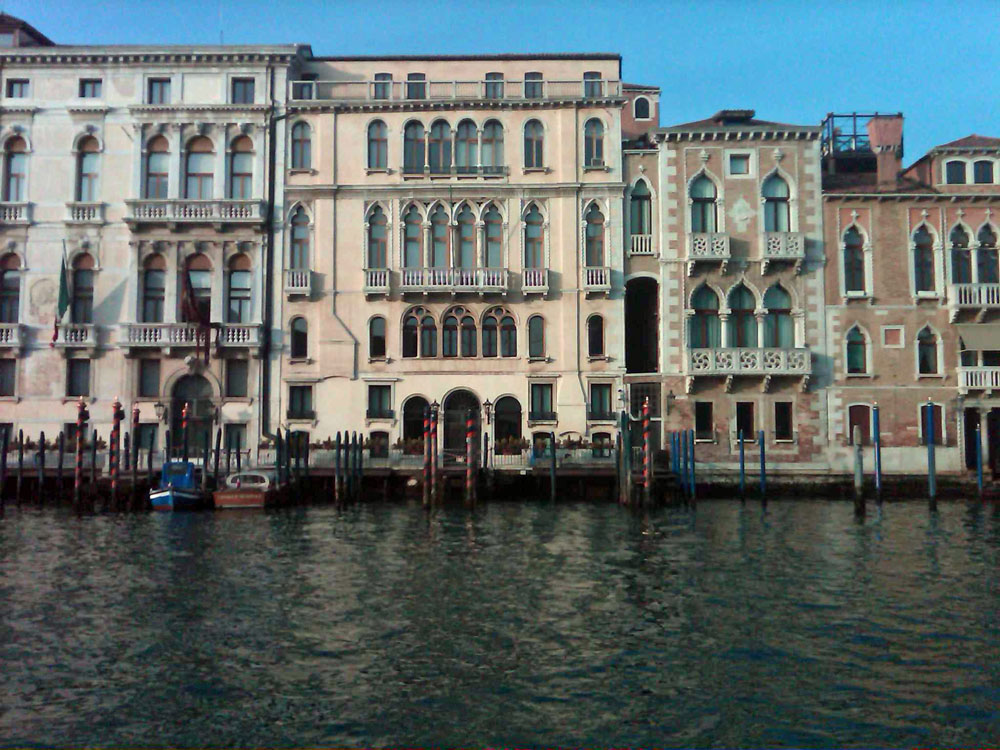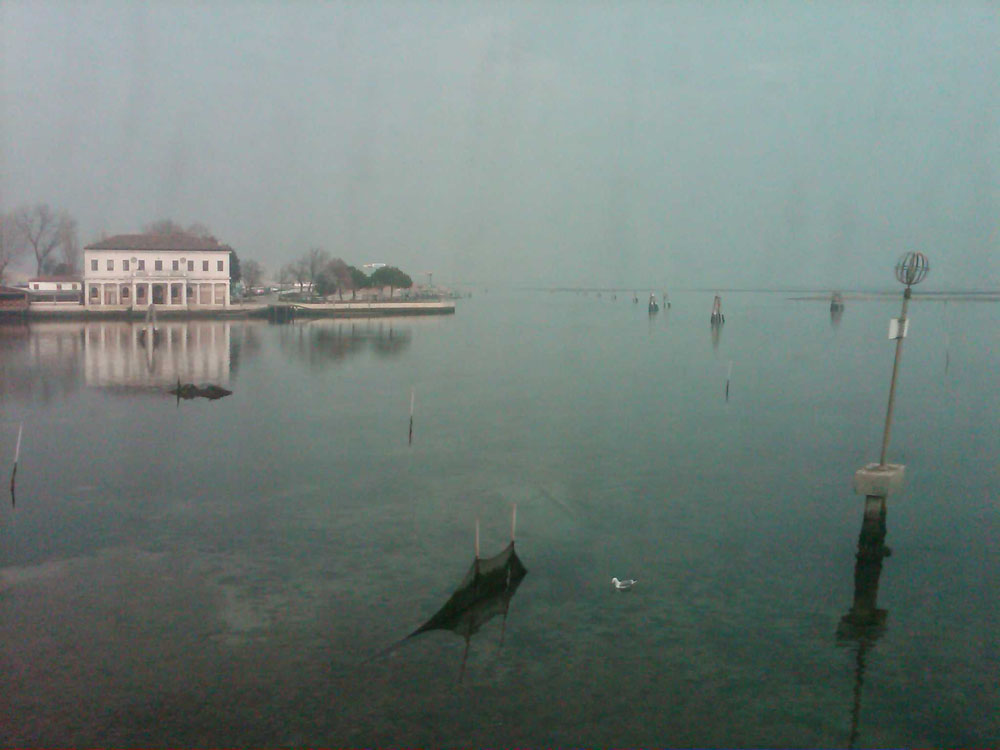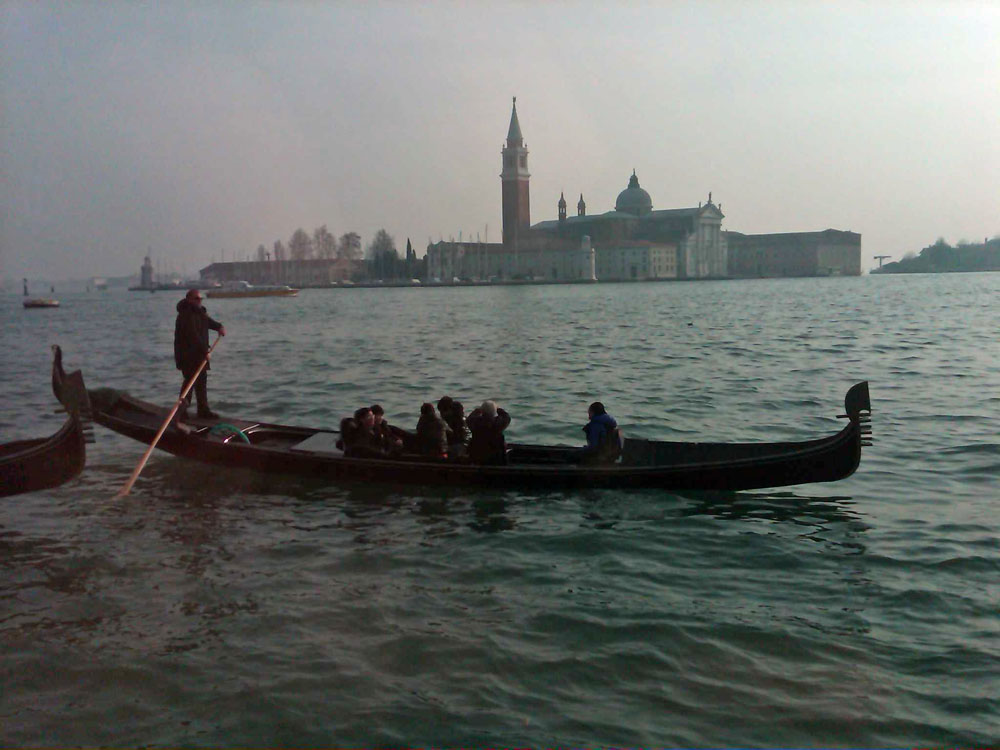Portal to the Real
For the artist attempting a complete rendition of Nature, abstraction provides a pathway to the real. Just such a conscientious impulse to distortion is seen in The Home of the Heron, an 1893 painting by George Inness at The Art Institute of Chicago. Here Inness renders a marsh as sensed in the real world and experienced in the emotional. “Influenced by 18th century theologian Emmanuel Swedenborg’s philosophy,” asserts an interpretive sign, “Inness’s spiritual beliefs were the guiding force behind his work. In this painting, for instance, the artist used abstraction to convey spiritual associations and capture the otherworldliness of the marsh.”
The commentator’s use of “abstraction” attests to the term’s semantic plasticity: For the modern viewer this painting’s golden glows and subtle images seem closer to representation than the extravagant patterns later subsumed under the sobriquet of “abstract art.” Even so, Inness’s departure from retinal reality places his work somewhere along abstraction’s long continuum.
In a New York Times review Roberta Smith calls attention to the natural foundation of abstraction. Artist Arthur Dove, she writes, merged Cubism with “a highly personal reaction to his native environment. Carefully studying natural forms around his family home in Geneva, N.Y., and using deliberate, fanning brushwork or pastel marks that gave his shapes a radiant quality, he devised flattened compositions that merged the geometric and the organic.”
While as viewers we appreciate an ambitious embrace of the real, we can also be startled when an artist with a reputation for divergence from surface reality states the requisite philosophy in unambiguous terms. Picasso, for example, stated that “I am not a surrealist. I have never been out of reality. I have always been in the essence of reality.”
Like Picasso, Inness celebrated a need to present “the real that nature gives.” Nature for Inness encompassed more than retinal reality: The role of the artist was ” to reproduce in other minds the impression which a scene has made upon him. A work of art does not appeal to the intellect. It does not appeal to the moral sense. Its aim is not to instruct, not to edify, but to awaken an emotion. This emotion may be one of love, of pity, of veneration, of hate, of pleasure, or of pain; but it must be a single emotion, if the work has unity, as every such work should have, and the true beauty of the work consists in the beauty of the sentiment or emotion which it inspires.
“Details in the picture must be elaborated only enough fully to reproduce the impression that the artist wishes to reproduce. When more than this is done, the impression is weakened or lost, and we see simply an array of external things which may be very cleverly painted, and may look very real, but which do not make an artistic painting. The effort and the difficulty of an artist is to combine the two, namely, to make the thought clear and to preserve the unity of impression.”
Not every artist recognizes the need to distort the surface of nature, added Inness. “Let Carat paint a rainbow, and his work reminds you of the poet’s description, ‘The rainbow is the spirit of the flowers.’ Let Meissonier paint a rainbow, and his work reminds you of a definition in chemistry. The one is poetic truth, the other is scientific truth; the former is aesthetic, the latter is analytic.”
You may view George Inness’s painting The Home of the Heron at the Art Institue of Chicago: http://www.artic.edu/aic/collections/artwork/64724 His ideas on art can be found in “A Painter on Painting,” Harper’s New Monthly Magazine, February 1878, pages 458-461. The quotation from Picasso is from Picasso on Art: A Selection of Views, ed. Dore Ashton, Da Capo Press. Finally, see “Partners in Abstraction, Viewed in Tandem.” By Roberta Smith. The New York Times. August 14, 2009. C27.
Do artists create life?
Throughout history artists have likened their creations to living organisms. In the nineteenth century Delacroix claimed a successful painting was “quickened by the breath of life” and Michelangelo’s “true vocation was to give life to bronze and marble.” The personal goal of Courbet was to “create living art.” A hundred years later Kandinsky stated that the successful painting “leads a full inner life.” According to Picasso, “when a form is realized, it is there to live its own life” and “a picture lives a life like a living creature.” Writing of the early medium of film, Rudolf Arnheim likened the director to a sculptor who “breathes life into stone and bids it move.”
Authors, too, believed language worthy of the infusion of life. Edith Wharton affirmed that once an author selects subject and form there remains only to “pass into his creation that imponderable something more which causes life to circulate in it.” Henry James saw a novel as “a living thing, all one and continuous, like any other organism.” The author, like any artist, “renews in the modern alchemist something like the old dream of the secret of life.” And more plainly: “It is art that makes life.”
Modern day artists remain sensitive to their generative powers. Vince Davenport, the engineer responsible for the construction of The Gates by Christo and Jeanne-Claude, desired to make the creation “come to life.” Conductor Lorin Maazel speaks of filling a fugue “full of life, and it’s that life that you want to bring forth.” Sculptor Kiki Smith says of her constructive material: “The more you manipulate it the more actual life you put into it.”
Smith’s claim brings us up short: Do artists create actual life or some kind of connatural aesthetic energy?
Creative individuals commonly draw no distinction. But Stanislavsky, for one, provides some cautionary thoughts about his early love for the stage: “I was beginning to look for genuine life in it, not ordinary life, of course, but artistic life. Perhaps at the time I was not able to distinguish between the one and the other.”
Disinterested commentators commonly position themselves higher on a continuum of doubt, couching their judgment in recondite terms: “Art is not actual life, it is true, but it is ideated life and perhaps as important,” asserted Bernard Berenson. And John Ruskin spoke of a kind of “under-life” which inhabits the stone touched by a master sculptor.
Finally, here is Mortimer J. Adler referring to “a kind of life” as he analyzes just how a novelist goes about invigorating language:
“The flesh of a book is as much a part of it as the skeleton. This is as true of books as it is of animals and human beings. The flesh—the outline spelled out, ‘read out,’ as we sometimes say—adds an essential dimension. It adds life, in the case of the animal. Just so, actually writing the book from an outline, no matter how detailed, gives the work a kind of life that it would not otherwise have had.”
Mortimer J. Adler’s comments are taken from How to Read a Book. Other quotations are referenced in The Aesthetikon.
The dark bridge
Suppose a creative individual intends to make items of pure utility. Can the resulting objects be rightly deemed high art by people of a later generation or another culture?
Museums contain many examples of such objects, wrote Marcel Duchamp: “African spoons were nothing at the time they were made, they were simply functional; later they become beautiful things, ‘works of art.’”
The transformation of craft into art, claimed Duchamp, was the work of spectators. And the African spoons share this transformation with all created works: Even objects intended as artistic creations are altered dramatically by their audiences.
By what mechanism does this alteration occur?
Between the artist’s intention and the audience’s perception will always exist a gap. Duchamp referred to this dark bridge as the ‘art coefficient,’ a term which he defined in these words: “An arithmetical relation between the unexpressed but intended and the unintentionally expressed.”
It is this art coefficient, says Duchamp, which is the true object of the sensitive viewer’s identification and interpretation, such acts being a “contribution to the creative act.”
Duchamp’s words encourage us to think of art less as a physical object and more as a mental construct or process, that being our personal revision of the art coefficient. Indeed, the finished work depends upon a partnership of artist and viewer, the individuals whom Duchamp refers to as “the two poles of the creation of art.”
Other artists have also championed the observer. “The material process which we call painting,” wrote Delacroix, “is no more than the pretext, the bridge between the mind of the artist and that of the beholder.” Picasso stated that when a painting is finished “it still goes on changing according to the state of mind of whoever is looking at it. A picture lives a life like a living creature. [. . . ] The picture lives only through the man who is looking at it.”
Some creative individuals, however, might resist Duchamp’s claim that “the creative act is not performed by the artist alone.” Not only does the rise of the spectator moderate the power of the originating artist but the machinations of the art coefficient would seem to deny any claim to the communication of a well-defined intent.
As for that final point, Duchamp believed a creator’s objective intentions cannot prevail in any work. The artist’s actions arise from “pure intuition and cannot be translated into a self-analysis, spoken or written, or even thought out.” Rather than the communicator of propositional meaning the artist performs as a “mediumistic being” transferring meaning to the spectator “in the form of an esthetic osmosis taking place through the inert matter, such as pigment, piano or marble.”
It is the work of the spectator, said Duchamp, which determines “the weight of the work on the esthetic scale.” And what the spectator does for a single work civilization does for a museum when artistic worth is determined “through considerations completely divorced from the rationalized explanations of the artist.” Adds Duchamp: “This becomes even more obvious when posterity gives its final verdict and sometimes rehabilitates forgotten artists.”
For Marcel Duchamp’s interpretation of the creative process see his essay “The Creative Act” in the book The Writings of Marcel Duchamp. (Da Capo Press). The example of the African spoons is from Dialogues with Marcel Duchamp. (Da Capo Press, page 70). Other quotations are from The Journal of Eugene Delacroix (Phaidon Press;) and “Two Statements by Picasso” from Picasso on Art: A Selection of Views. (Da Capo Press).
Epic poem to wide screen
The translation of an Old English poem into cinematic form would seem to offer on its own merits considerable opportunity for reflection. How do the subtleties of language, the observer might ask, find expression in visual metaphor? And how do the tensions inherent in poetic lines transmogrify into the light and sound vital to a film’s success?
If the pursuit of such questions would take us far, the makers of Beowulf have thrown into our cognitive path a stop. Of greater import than our first questions are the anticipated effects on the creative process of a fairly new technology employed in this motion picture. We are speaking about a digital tinkering which goes under the rubric of motion capture. Mocap, to employ its spunky name, has been described as a technique for “transforming live action performances into computer animated images” by Dave Kehr of the New York Times.
Live action performance, of course, refers to the activity of the actor. Just how intricately mocap manipulates the work of the thespian is recognized in another Times article in which Manohla Dargis describes the process of performance capture as one which “allows filmmakers to map an actor’s expressions and gestures onto a computer-generated model, which is then further tweaked.”
Click here to read the rest of this story . . .
The driving gear
“Art is limitation. The essence of every picture is the frame.” A quote from Chesterton, emailed from Nathan Perry, a musician in Denver, brings to mind again the energizing nature of aesthetic restriction. We have visited this topic before, in June of 2006, when we considered a comment from Jason Brockert to the effect that “good art arises from limitations.” He provided an example: “A pencil forces the user to work hard to realize and be challenged by its limitations.”
The word “limitation” offers a productive contradiction. The artist may feel that pencil lines are too limited in their effect to render the real. Yet, as Rudolf Arnheim tells us, “the creative power of the artist can only come into play where reality and the medium of representation do not coincide.” The creative individual is confronted with a paradox: The very limitation of the pencil that restrains the complete representation of the surface of reality is the sole channel for the rendition of the real. No one who has engaged in a vigorous struggle with a pencil and compared the results with the surface image of a snapshot will fail to see a difference in the formal embrace of forces which surround a subject.
Now that it has been mentioned, consider more deeply the black and white photograph where an absence of color seems an inhibition to complete expression. The experienced artist attempts to escape the bars of form by applying the formal element of contrast which at once heightens the intensity of the work and is the sole conduit for the emotions—-elements integral to the real and thus requisite to a successful work. Photographer W. Eugene Smith explained why he exploited a lack of color and additional restrictions which he identified as “the compromises and deliberate shortcomings built into film and paper” in a filmed interview later included in The Aesthetikon:
“People asked ‘was it cheating and untrue to ferrocyanide a print to make a good print? You are manipulating the truth by darkening a shadow.’ All I can say is the better the film the quicker I can make a print and the better the paper the quicker I can make a print and if I have to make up for the compromises and deliberate shortcomings built into film and paper then I am certainly going to do it.”
Scores of other artists testify to the energizing nature of limitation. “The force that through the green fuse drives the flower,” wrote Dylan Thomas, “drives my green age.” The restriction of the stem, mechanical and cold, is a necessary adjunct to the driving force of life in the creation of a bloom. So is a completed work the plasticization of the capitalization of limitation and the exploitation of restriction the driving gear of the artistic engine.
Body and language
The actor, one imagines, in the application of formal components to the human body shares with the dancer the enjoyment of an exclusive canvas—such unencumbrance being, we posit, the determining nature of the pure aesthetic form. Yet in a recent interview Ian McKellen reveals that the actor who attends to language will either divide attention with, or devote full consideration to, that same temporal thread which serves as the foundational material of the author. McKellen recalls shifting his attention abruptly from body to language in representing Lear: “Initially, in rehearsal, I was going, ‘Is he a warrior king? Is he a priest king? He’s eighty—do I have to be old?’” he said. “’Do I have to walk old? Do I have to sound old? Is he ill? He’s got this heart condition, has he?’ Then I sort of let all that go and said, ‘Let’s just concentrate on what he’s actually saying.’ It’s his mind that’s declining but being woken, and there are explosions happening. There’s a storm in his mind.”
Much earlier, as a student, McKellen’s acting was “all about disguise. Makeup was very important. Wigs. Funny walks.” Anything, we might put it, that would draw attention of actor and audience away from the body with its tremendous demands on the gears and pulleys of the ingenious engine. The actor grows into an appreciation of the expressive potential of tissue and tendon, it seems, and with the passage of time and the enhancement of creative power the material of language provides a resistance as serviceable.
John Lahr’s article, “He that Plays the King,” appears in the August 27, 2007 issue of The New Yorker.
When an Abstract Pattern Becomes a Creative Foundation
Designer and director Robert Wilson speaks of the role played by a schematic in art’s emerging stages. “We start with something abstract and then fill it in,” he relates in an interview. “It’s as if an architect has designed a building: You have the megastructure and you live in the building.” Collaborating artists can reside in the same structure, asserts Wilson, if the works of all conform to the design: “We live in this building with our own aesthetics, our own decorations, our own fantasies that are very different from one another. But there’s a kind of harmony because we live within this megastructure.”
Wilson offers ‘Einstein at the Beach,’ his opera scored by collaborator Philip Glass, as an illustrative case. “The first thing we did was start with an abstract structure,” recalls Wilson, who then describes the intricate pattern of themes in the four act work: “Act one you had themes A and B; act two you had C and A; act three you had B and C; act four you had ABCD together for the first time. So you had all possible combinations of ABC and D together. And in between these four acts we had five interlude scenes. I call them ‘knee plays,’ like I have a knee and it links two similar schematics.”
There followed the assignation of time to each combination of scene and theme: “1A is 24 minutes; 1B is 23 minutes; 2C is 22 minutes; 2A is 23 minutes; etc. The knee plays are four minutes, four minutes, five for the third, four minutes for the fourth.”
Themes and their intervals were then related to mental constructs. “Then I figured out from this structure a visual book. In 1A I would introduce a train, and the second time the A theme comes back the train comes back in a different time and space. And the third time the A theme appears it is a building but it is in the same perspective as when we saw the train, architecturally occupying the same space. And Phil filled in the structure with music. So in Act 1A he would introduce a musical theme which in 4C became a major musical theme, while in the third knee play that was five minutes long I introduced a visual theme that later became a major visual theme in 4C.”
Wilson concludes: “So we filled in the form, the architecture, the megastructure in our own ways but we were working from a structure which was abstract in the time frame.”
Wilson’s comments recall to our mind a similar architectural metaphor from the prefaces of Henry James, a novelist who often entrusted the development of his work to the concentrating force of symmetric design. Critic E. M. Forster identified the schematic of “The Ambassadors,” for example, as an hour glass, within the body of which the novel’s two vital characters changed their moral positions as the work developed. (A later commentator, Martin Seymour-Smith, distilled Forster’s metaphor into a visual drawing.)
To enrich our Jamesian comparison, the architectural nature of Wilson’s metaphor recalls the novelist’s “House of Fiction,” behind the scattered windows of which all artists stand, each viewing reality from a unique perspective. The result for James was a panoply of individual works; Wilson, in contrast, asserts the collaborative potential of a shared schematic.
Not everyone is equally pleased with the subjection of the creative seed to such intellectualizing. Critic Forster, for one, was impressed but less than overwhelmed with the Jamesian schematic: “It is this question of the rigid pattern [ . . . ] Can it be combined with the immense richness of material which life provides?” Inherent in the question is both an assumption of a conflict between form and meaning and the supposition that a novel renders the vitality of earthly life. One imagines James responding with a defense of art’s generative nature, building further on his assertion that art creates life.
In any event, all of these comments suggest the possibility of a productive discussion concerning the origins of the creative act. The interesting issue is the extent to which artists build their works upon abstract patterns, and to what external forces, to add fuel to our fire, the schematics appeal.
Mr. Wilson’s interview appears as an additional feature on the DVD, “Philip Glass: Looking Glass,” directed by Eric Darmon. http://www.ideale-audience.com
The life-giving person
Judith Jamison of Alvin Ailey looks for dancers with “a person inside of them, who can translate their life.” Her comments to The New York Times earlier this month suggest that requisite to a life-giving performance is a personality so self-assured and responsible as to render a vision idiosyncratic and true.
The transformation of the secret person into life is for the dancer dependent upon a skilled control of the human body, an entity Ms. Jamison refers to as “something perfect to work with.” We are tempted to extend a claim of indefectibility to the constructive materials of other media, be they the language of the writer or the oils of the painter. The corruption of form arises as the mechanisms of creation engage with the materials at hand, propelling at once the artist into that position “close to God” identified by Ms. Jamison as the rightful domain of the dancer.
Ms. Jamison’s interview by Chester Higgins, Jr., appeared in the July 5, 2006 edition of The New York Times.
Limitation in form and power
Are the creative potentials of a computer program and a paint brush equable? If a comprehensive answer to such a question would take us far, we can advance some portion of the way by acknowledging the formal restrictions requisite to artistic production.
Jason Brockert has published a letter addressing the topic, and although his concern is the classroom we believe the discussion relevant to the studio. “Good art arises from limitations,” he writes. “Honest creativity comes from overcoming obstacles, digging deep into oneself to find solutions. A pencil forces the user to work hard to realize and be challenged by its limitations.”
Those very limitations, those obstacles, those resistances of pencil and brush, seem for Brockert to absent themselves from– or to be present as but shadowy form in– the pixilated canvas. To continue: “The computer is a fabulous, necessary tool in today’s art world: my problem is with its limitations.” Here the limitation is the digital medium’s reduced substantiation. The reduction in the inner drag of substantial form leaves the artist with insufficient means.
The freedom of the computer, then, encages the artist. Brockert’s analysis finds parallels elsewhere. A couple of years back, for example, Ken Johnson noted that the sculptor enjoys “enormous creative freedom” not shared by the painter. After all, sculpture’s dimensions are greater than two in number and the practitioner can toss just about any constructive material into the mix without danger of tripping into another medium. But in reflecting on this freedom, Johnson raises a concern anticipating Brockert’s view of the computer: “The down side is, if sculpture can be anything, then maybe it is not anything in particular” and “it becomes hard for people to care very passionately about it (the way many people still care about painting) much less evaluate it. If you think that artists, like children, need limits, you may not like what has become of sculpture.”
Mr. Brockert’s letter is in the June 27, 2006 issue of PC Magazine. Mr. Johnson’s article is in the May 2, 2004 edition of The New York Times.
From a performing soup, the creative essence
Mauro Bigonzetti’s “In Vento,” presented by New York City Ballet earlier this month, provides new evidence of the artistic imperative to pacify the embattled canvases of performance art. The subtle combat of story and dancer, for example, has been obviated by a direct method: Mr. Bigonzetti dispenses with the fomer. This new ballet’s title distills not so much narration as organizing subject: the life-creating impulsion of energy through the human body.
The threads of narration’s companion interlopers, if not dismissed from the stage, are slackened. Costumes are minimized to tights and leotards. Music is reduced to a “restrained” level, to cite the description of one commentator. Stage settings are simplified to shafts of light and blocks of darkness. Such temperings allow the vital interactivity of dancer and audience to proceed unhampered.
Bigonzetti acknowledges a creative obligation to Balanchine, a choreographer whose own words addressed the need to extract the essence of art from the theatric muddle. Consider independence from narrative: “A ballet may contain a story, but the visual spectacle, not the story is the essential element.” As for the bodily pivot about which dance revolves: “The important thing in ballet is the movement itself, as it is sound which is important in symphony.” Finally, concerning the salutary independence of dancer: “We must first realize that dancing is an absolutely independent art, not merely a secondary accompanying one.”
Daffodils and art
Absent a consideration of minor eccentricities, we admit a visual equivalence between the petals and leaves of one daffodil and those of its neighbor. Hence a paradox, for any defense of the flower’s vitality can appeal only to observation of root, stem and petal– formal distillations which in their ubiquity bespeak imaginative poverty. Even so, these cold forms alone are sufficient for our vital purpose. We might stand deep in a mighty lawn of daffodils, their creator before the aesthetic court, and find evidence insufficient for an accusation of uninspired derivation.
The key to this conundrum is a vital force absent to the eye. Our gardenly observation reminds us that Mother Nature creates a new daffodil by impulsion of spirit into preconceived form. And that observation reminds us that form, rightly denigrated when the sole arena of artistic enterprise, remains requisite to the creation of life. Absent form, Mother Nature’s forceful impulse dissipates into vacuous color and aroma.
As Mother Nature, so the artist. Néret apprehends the insufficiency but necessity of form to creation in these comments regarding Delacroix: “The lesson that he teaches is clear. It is not enough to imitate the great masters; one must, instead, draw on them for inspiration as one seeks to transcend their achievement.” And a few pages later: “Only a great artist imbued with the lessons of the past can successfully defy those lessons, invent new rules and yet remain with the tradition.”
As the flower, then, so the work of art: Absent form, the artist’s imaginative energy dissipates into the indeterminate. Just as the green stem channels sap into a vital flower, the primal matter on palette constricts and enlivens the image of origination into powerful work.
Mark Rothko on the necessity of abstraction
The writings of Mark Rothko, recently discovered in a dusty trunk and now published by Yale University Press under the aegis of the artist’s son Christopher, deal at considerable length with that seeming contradiction so commonly experienced in the humanities: Art must be both abstract and tethered to the earth. It is natural, I think, to wonder how works of art which aim to express nothing but the truth depart so aggressively from that reality apparent to the eye. The Aesthetikon posits a solution: Abstraction, arising as it does from the fragmentation of constructive materials, offers a sounding board of necessary complexity for the expression of that resonant meaning visible to the finer sensibilities of the conscientious artist. In Mr. Rothko’s words: “The abstractionists of our age are also our objectivists, and they use appearances for the purposes of demonstrating the reality of the world of ideas.”
—
Photographs and text by Walter Idlewild

